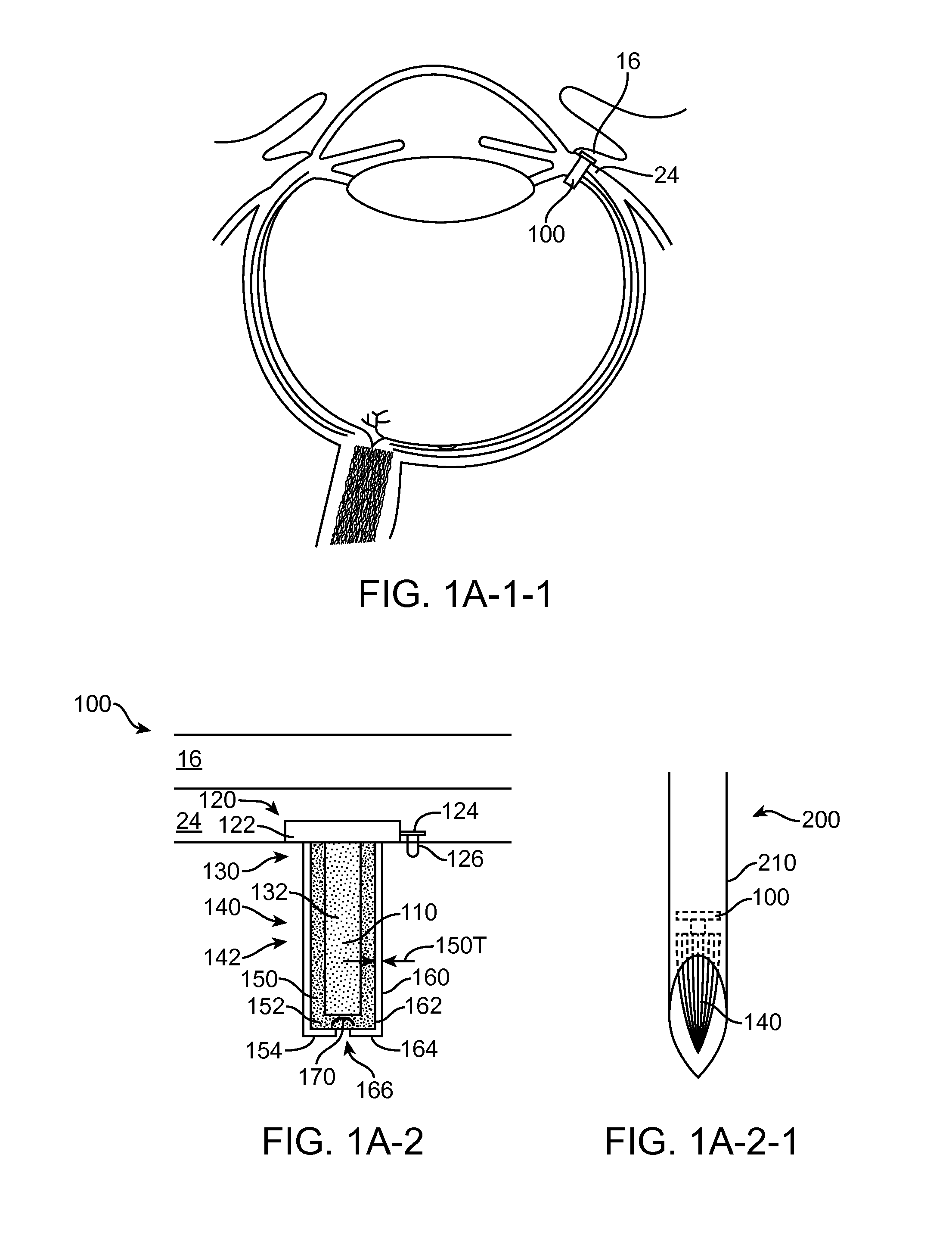Combined drug delivery methods and apparatus
a technology of combined drug delivery and apparatus, which is applied in the direction of medical preparations, prostheses, medical science, etc., can solve the problems of unsatisfactory delivery of these drugs, damage to the retina, and eye damage, so as to reduce the risk of infection and the frequency of injections into the therapeutic device.
- Summary
- Abstract
- Description
- Claims
- Application Information
AI Technical Summary
Benefits of technology
Problems solved by technology
Method used
Image
Examples
example a
Combined Treatment with a First Anti-Neoplasia Therapeutic Agent and a Second Antiinflammatory Therapeutic Agent
[0373]A first therapeutic agent comprising an anti-neoplasia agent, such as an antineovascular agent, for example a VEGF inhibitor such as a Lucentis can be combined with an antiinflammatory, such as steroid comprising triamcinolone actendie. The release of triamcinolone acetonide suspension is described supra in Examples 10 and 11 and corresponding FIG. 20. The first reservoir may comprise a volume of about 125 uL and an RRI of about 0.1 such that the first reservoir is tuned to receive a 50 uL injection of Lucentis and provide a concentration of about 3 ug / mL in the vitreous humor. The second reservoir may comprise Triamcinolone Acetonide having an RRI of 1.2, as described in Example 11, supra. The second reservoir may be configured in parallel or in series as described herein, and provide trimcinolone acetonide for about 400 days over the course of at least 2 sequential...
example b
VEGF Inhibitors Combined with COX Inhibitors
[0376]A first therapeutic agent comprising an anti-neoplasia agent, such as an antineovascular agent, for example a VEGF inhibitor such as a Lucentis can be combined with a non-steroidal antiinflammatory, such as a COX inhibitor, for example comprising celecoxib. The release of the small molecule cyclcoxib through the porous frit structure 150 can be similar to triamcinolone acetonide as described supra in Examples 10 and 11 and corresponding FIG. 20. The first reservoir may comprise a volume of about 125 uL and an RRI of about 0.1 such that the first reservoir is tuned to receive a 50 uL injection of Lucentis and provide a concentration of about 3 ug / mL in the vitreous humor. The second reservoir may comprise solid celecoxib and have an RRI of 1.2, similar to that described in Example 11, supra. The second reservoir may be configured in parallel or in series as described herein, and provide therapeutic amounts of celecoxib.
[0377]The amoun...
example 5
Release of Protein Through a Cylindrical Sintered Porous Titanium Cylinder
[0384]Reservoirs were fabricated from syringes and sintered porous titanium cylinders (available from Applied Porous Technologies, Inc., Mott Corporation or Chand Eisenmann Metallurgical). These were sintered porous cylinders with a diameter of 0.062 inches and a thickness of 0.039 inches prepared from titanium particles. The porosity is 0.17 with mean pore sizes on the order of 3 to 5 micrometers. The porous cylinder is characterized as 0.2 media grade according to measurements of bubble point. The porous cylinders were press-fit into sleeves machined from Delrin. The sleeves exposed one entire planar face to the solution in the reservoir and the other entire planar face to the receiver solution in the vials, corresponding to an area of 1.9 square millimeters. The tips were cut off of 1 mL polypropylene syringes and machined to accept a polymer sleeve with outer diameter slightly larger than the inner diamete...
PUM
 Login to View More
Login to View More Abstract
Description
Claims
Application Information
 Login to View More
Login to View More - R&D
- Intellectual Property
- Life Sciences
- Materials
- Tech Scout
- Unparalleled Data Quality
- Higher Quality Content
- 60% Fewer Hallucinations
Browse by: Latest US Patents, China's latest patents, Technical Efficacy Thesaurus, Application Domain, Technology Topic, Popular Technical Reports.
© 2025 PatSnap. All rights reserved.Legal|Privacy policy|Modern Slavery Act Transparency Statement|Sitemap|About US| Contact US: help@patsnap.com



